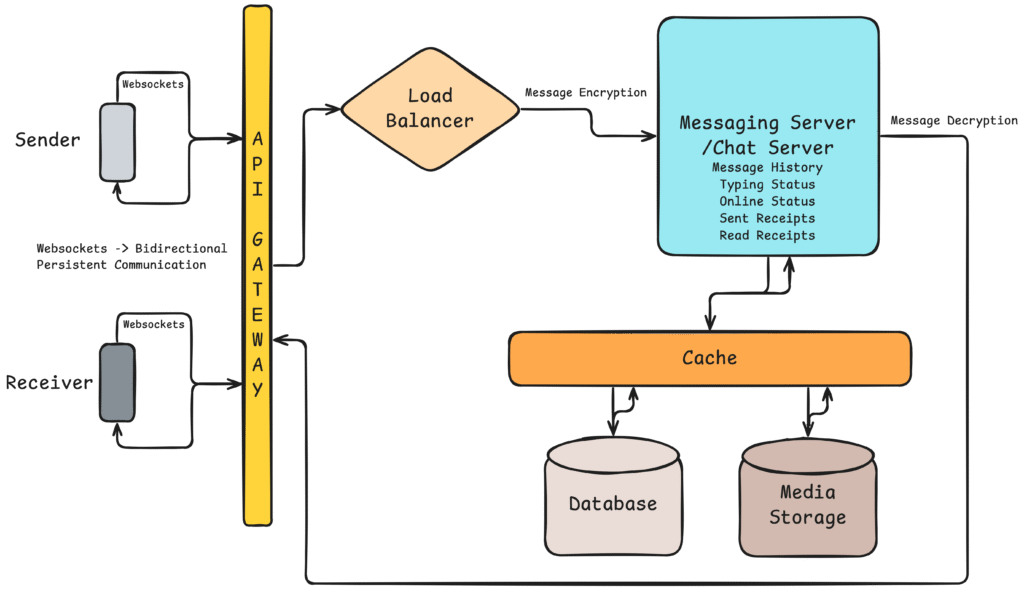The Architecture Diagram below is intuitive. However, there are several questions which one can ask and the answers to it is given inline.

How does instant real-time statuses like online status, typing status, etc shown?
In a real-time chat system, “online status,” “typing status,” and similar live indicators are usually powered by a persistent, bidirectional communication channel—most commonly WebSockets or MQTT—combined with presence tracking on the backend.
Here’s how each part works:
1. Presence Tracking (Online/Offline Status)
- When a user logs in, the client app (web/mobile) opens a WebSocket connection to the server.
- The backend Presence Service records the user’s status as
onlinein a presence database (often an in-memory store like Redis for fast updates). - When the WebSocket closes (user logs out, loses connection, or goes idle), the backend marks them as
offlineafter a timeout.- Redis Hash/Set is common:
user_status: { user_id_1: "online", user_id_2: "offline" }
- Redis Hash/Set is common:
- Push to Other Clients – The presence service broadcasts a status update to all relevant contacts via WebSocket channels or a publish/subscribe system.
2. Typing Indicators
- When a user starts typing, the client sends a “typing” event via WebSocket:
{ "type": "typing", "conversation_id": "abc", "user_id": "123" } - The server receives this event and broadcasts it to all participants in that conversation.
- Typing status is temporary—after a few seconds with no “typing” events, the client assumes the user stopped typing.
3. Read Receipts & Last Seen
- Read Receipts
- When a message is displayed on a recipient’s screen, the client sends a “message_read” event to the server.
- The backend updates the message status in the database and broadcasts to the sender.
- Last Seen
- Whenever the user’s connection drops or they close the app, the backend records a
last_seentimestamp in the database.
- Whenever the user’s connection drops or they close the app, the backend records a
4. Protocols Used
- WebSockets – Most common for low-latency updates.
- MQTT – Lightweight alternative, especially for mobile/IoT devices.
- HTTP Fallback – For old browsers, long polling or Server-Sent Events.
5. Security
- Authentication – Every WebSocket connection is authenticated using JWT or OAuth tokens.
- Encryption – TLS for transport security, end-to-end encryption (E2EE) for private messages.
- Event Filtering – A user only receives events for conversations they are part of.
💡 In simple words:
Your online status is updated because the app keeps a “live wire” (WebSocket) connected to the server. The moment something changes—like you start typing—the app sends a tiny signal to the server, and the server instantly pushes that signal to everyone who needs to see it.
